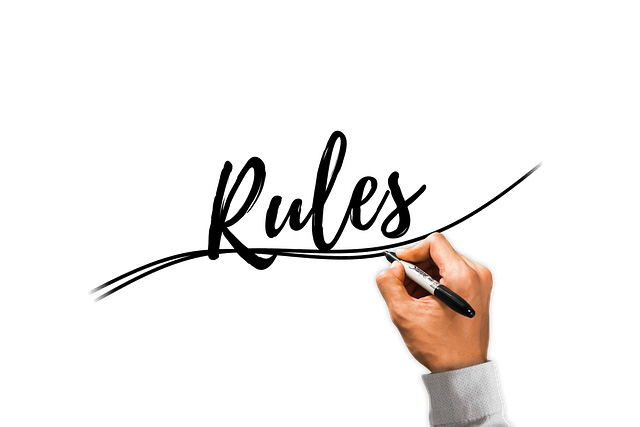When to Write Out Numbers In Nonfiction Books
Have you ever struggled with the decision of whether to write out a number or use the numerical form? It’s an important aspect of nonfiction writing that can be confusing and time consuming to fix, if done wrong.
Do you go for the succinct version of ‘4’ or opt for the wordy ‘four’? Which approach is right, which one is wrong, and why? How about double digits? How about dates?
If you find yourself asking these questions, then this blog post is for you.
In this article, we’ll look at when to write out numbers in nonfiction books and provide helpful rules to make your decision making a lot easier.
Let’s get started!
When Should Numbers Be Written as Words?
Before we get into the weeds a little later in the article, here’s the logic behind spelled-out numbers: numbers included in a flow of text often act as a roadblock to readability.
The reason for this is that they engage a different part of the brain, let’s call it the mathematical/scientific side.
In other words, by merging numbers with text you’re mixing two different languages that must be interpreted separately by your brain, resulting in the roadblock.
Let’s illustrate this with an example.
The following line of text…
Six hundred people attended the concert.
…flows naturally to the reader. However, the numeric version of this sentence doesn’t:
600 people attended the concert.
The reason this reads more “clunkily” is that we’re mixing two different languages — one is designed for mathematical calculations and the other one is designed for reading comprehension.
Now, on occasion you need to be able to interpret both languages simultaneously, that’s why street addresses show both the number and the name of the street.
In this case, your math brain needs to easily assess whether the numbers are going up or down as you drive or walk down the street and your reading brain needs to quickly be able to assess whether or not you’re on the right street.
But when it comes to reading nonfiction, you want to minimize this language shift as much as possible so as to remove any disruptions to readability.
What Are The 10 Rules For Writing Numbers? (with examples)

Now, when it comes to best practices, there are a lot of rules to follow and as many exceptions, plus there is the matter of writing styles (will you be following the APA style, the MLA, the Chicago style, the AP style?)
So, to make things as simple as possible, I’ve condensed the best practices for spelling numbers out into the following ten rules.
Let’s get started!
Rule 1: Beginning of a sentence
As illustrated in the example above, always spell out numbers at the beginning of a sentence, no matter how small or large they are.
For example:
Two hundred people attended the live seminar last night.
Three thousand and forty seven students enrolled in the course.
This rule applies to more than just whole numbers and includes ordinal numbers (first, second, etc.), and fractions (half, quarter, etc.):
The fourth round of voting will take place next week.
A quarter of the population lives below the poverty line.
Rule 2: Middle of a sentence
If you’re including figures in the middle of a sentence, round numbers (hundred, thousand, million), ordinal numbers (first, second), and common fractions (half, quarter, two thirds) need to be written out. Other types of numbers follow rules 3-9:
For example:
The new policy affected thousands of new residents.
The latest census numbers revealed that a quarter of the population lack high-speed internet access.
Rule 3: Whole numbers

Outside of the beginning of a sentence, whole numbers are typically spelled out if they’re lower than one hundred:
The new voting bylaw impacted ninety seven precincts.
The cafeteria offers nine ice cream flavors.
They discovered 137 new species of mosquitoes on the xyz archipelago
Rule 4: Decimal numbers
Decimal numbers need to be written as figures no matter where they appear on a sentence (beginning, middle or end.)
Here’s an example:
37.29% of high school students choose vocational careers
Spelling out the above number would just read too awkwardly:
Thirty seven point twenty nine percent of high school students choose vocational careers
Rule 5: Units of measurement
Spell out whole numbers used with a unit of measurement, such as time or money:
The city raised bus fares to three dollars for a one-way trip.
The next stop is ten minutes away.
But don’t spell out decimal numbers:
The transit system raised the cost of day passes to $5.25.
Rule 6: Large non-round numbers

When writing large numbers that are not round, use commas to separate groups of three digits:
There were 12,547 flu hospitalizations in the city this year.
Rule 7: Extremely large numbers
When writing extremely large numbers that are not round, use a numeric figure followed by a spelled-out unit qualifier:
It’s estimated that the newly discovered star is 12.8 million light-years away, as opposed to:
It’s estimated that the newly discovered star is 12,800,000 light-years away
Rule 8: Two numbers in a row
When two numbers need be placed consecutively, write out one of them out and use digits for the other one:
Either: The first 5 nine-year olds to finish the race will receive a medal, or
The first five 9-year olds to finish the race will receive a medal, is correct.
Rule 9: Dates
Specific years need to be written as numbers, but decades or centuries need to be spelled out:
The first time the blue party came to power was in 1968, but in the nineties it merged with the white party.
Rule 10: Numbers in titles
Last but not least, if you need to quote a number in a title or a heading, don’t spell it out:
The 19 Best Salad Recipes
7 Resume Writing Tricks
In Conclusion
Writing out numbers in nonfiction books may seem like an inconsequential detail, but it can make the difference between making your writing appear professional or amateurish.
By following the ten rules outlined above, you can ensure that your work is presented accurately and professionally every time.
With practice, knowing when to spell out numbers or use them as numerals will become second nature, allowing you to focus on crafting great content that engages readers.

Harry Wallett is the Managing Director of Cascadia Author Services. He has a decade of experience as the Founder and Managing Director of Relay Publishing, which has sold over 3 million copies of books in all genres for its authors, and looks after a team of 50+ industry professionals working across the world.
Harry is inspired by the process of book creation and is passionate about the stories and characters behind the prose. He loves working with the writers and has shepherded 1000s of titles to publication over the years. He knows first-hand what it takes to not only create an unputdownable book, but also how to get it into the hands of the right readers for success.
Books are still one of the most powerful mediums to communicate ideas and establish indisputable authority in a field, boosting your reach and stature. But publishing isn’t a quick and easy process—nor should it be, or everyone would do it!
A professional grade book takes 250+ individual tasks to complete. Cascadia is an expert in every single one of them. Do you want to harness our expertise to launch your book into the stratosphere? Chat with us!








Leave a Reply